#don lancaster
Explore tagged Tumblr posts
Text
A while back, Sam over at Look Mum No Computer did an examiner/recreation of the early 1970s automated music system, the Psych-Tone. Designed by the legendary Don Lancaster and first appearing in the February 1971 issue of Popular Electronics (and a kit made available by SWTPC, the Southwest Technical Products Corporation), the Psych-Tone used early logic chips and transistors to play a number of different tunes based on the setting of various switches and potentiometers.

The core of the circuit is a pseudorandom sequence generator — a circuit that creates a single random sequence of 0s and 1s, and keeps it circulating. With six stages in the chain, the sequence is 63 steps long. The three selector knobs each pick where in the chain to listen, and when that value is 1, pass that through a potentiometer to set a partial pitch. The three partial values sum together to make a tune, which is played on an organ-like tone generator.

In explaining the device, Sam built a new version of the machine's sequencer section, using slightly newer chips and adding some LEDs to illustrate the functioning, for folks to play on synths with at his This Museum is (Not) Obsolete. Which got me thinking about doing something similar myself — building essentially the note generator as a random sequence creator for Eurorack.
Fortunately, in addition to Sam's video and the original article, Lancaster wrote up how to build these PRSGs, in varying lengths, in his book CMOS Cookbook; where the original used individual flipflops, this updated circuit lets you use shift registers (since one of those is effectively an internally-connected string of flipflops). To boil things down, by feeding certain of the output values back to the input through an XOR gate, a n bit shift register can cycle through a 2^(n-1) sequence, which can then be used in a number of different ways — basically anywhere you want something that's effectively random, but potentially repeatably so.
The circuit diagrams and tables given there have let me breadboard up something that I haven't yet tested, for a few reasons.

First, I'm feeling a little unsure as to how long to make the sequence. Obviously, if you make the sequence too short, it's too repetitive, but conversely, if it's too long, it's not going to be distinguishable from randomness. The original's length of 63 steps seems short, but the breadboarded circuit right now is set up for not 6, but 16 stages, which would yield a sequence length of 65,535 steps, which might be a bit much.
That's not more than something to work out in testing, though, which leads to reason two. Like with Sam's version, the one on the breadboard is meant to show the internal workings by using LEDs. And I've got a couple of nice, compact 10-segment bar graph LED displays on the breadboard, each one wired to 8 of the 16 stages. But LEDs can't handle just being plugged into a raw voltage; each one needs a current-limiting resistor to keep it from burning out. And while I could hook up 16 separate resistors on this breadboard, I don't wanna. I have — someplace around here — a nice little assortment of resistor arrays, chiplike affairs where eight identical resistors all connect to the same ground pin. Once I find them, I can watch the blinkenlights and get a better picture of the kind of sequences I'm dealing with.
(Your basic pseudorandom sequence generator goes in one direction, while the Psych-Tone can also run the sequence in reverse; while the section from CMOS Cookbook is a little terse about how that's done, I think I have that figured out too. Unfortunately, changing directions on the fly requires some complicated switching, so it's hard to do with just hardware — though I just found a giant chunky switch in my collection that could be coerced into selecting forwards or backwards on three different sequence lengths — say, switching between 8, 12, and 16 stages? Hmmm.)
The actual translation from discrete stages of either 0 or 1 works first by selecting one of the stages, and connecting it to a potentiometer, wired as a voltage divider. When the stage is at 0, the pot's output is still 0v. But when the stage hits 1, the pot outputs a voltage between 0v and the "high" voltage level of the circuit, depending on where the knob is set. With just that, you've got a two-note output. If you add another selector with its own pot, and add the output voltages together, you've suddenly got four distinct values: 0v when neither is a 1, the ratio from the A selector when only it has a 1, the ratio from the B selector likewise, and A+B when both have 1s. Go to three selectors and you've got 8 values; four will get you 16 values.
(Well, assuming that A+B doesn't exactly equal C, or some similar arrangement that would reduce the actual possible values, and I'm intending to make a constant 1 selectable as well, so you could use it for tuning or as an offset. Because of how Eurorack tuning works, if you have A-C on different stages and D is always 1V, then the notes would be the same 8 as those for A-C but up one octave.)
Anyway. I am overexplaining a project that's barely begun, and I've been doing that for several hours while I should be trying to sleep, neither of which is a good sign. Perhaps tomorrow I'll find those resistor arrays and at least get things blinking.
4 notes
·
View notes
Text
Don Lancaster was a pioneer and legend in the homebrew computer scene of the 1970s and 80s. He wrote many cookbooks for building electronics and computers at home, which was pretty much the only way to go in the 70s since home computers did not exist.
I remember the TV typewriter cookbook and wanting to build one. This was basically just a keyboard and text video generator for your TV, not a complete guide to building a computer.
Yet even that held a great fascination for me as a kid and others back then. It was a time before computers or even DVDs or VCRs, and the idea of being able to control what was displayed on your TV was something really new and exciting.
Don Lancaster passed away this June. He was 83. RIP and thanks for your generosity in sharing your knowledge and wisdom with us, Don.

285 notes
·
View notes
Text
Frank Gorshin did the best Burt Lancaster imitation in the world. This is him doing Burt on a celebrity roast of Sammy Davis Jr. Don Rickles and Dean Martin both enjoy his imitation as much as I do. It's all in the laugh, the eyes, and the hands. Frank is also my favorite Riddler in the Batman TV show, but I digress.
#frank gorshin#imitation#burt lancaster#Dean Martin's Celebrity Roast#Dean Martin#Don Rickles#sammy davis jr#Freddie Prinz#hilarious#lol#best Riddler#batman TV show#love#happiness#thank you#sharing#joy#laughter#giggling#funny#i love those roasts#great memories
52 notes
·
View notes
Photo



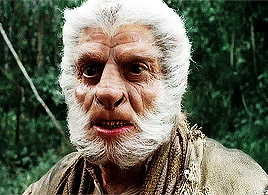






The Island of Dr. Moreau (1977) dir. Don Taylor
#the island of dr. moreau#filmedit#scifiedit#horroredit#don taylor#movies#my gifs#sci fi#horror#sci fi horror#1970s#on tubi#michael york#burt lancaster#richard basehart#barbara carrera
351 notes
·
View notes
Text
Burt Lancaster presents the Gold Logie award for Best Female and Male Personalities on Australian Television to Jeanie Little and Done Lane, 1977.
#logie awards#1977#1970s#jeanie little#don lane#video#the source video was choppy so i had to cut when it froze at the beginning#burt lancaster
3 notes
·
View notes
Photo
You can also get the book for free; Don Lancaster has PDFs of his old books up for download at his tinaja.com website, including this TV Typewriter Cookbook and his (still somewhat useful to the modern experimenter) TTL Cookbook, CMOS Cookbook, and Active Filter Cookbook.







build your own TV typewriter
By User Swtpc6800 (Michael Holley) on en.wikipedia - Photo by Michael Holley, 2005., Public Domain, Link
By User Swtpc6800 (Michael Holley) on en.wikipedia - Photo by Michael Holley, 2005., Public Domain, Link
By Swtpc6800 (Michael Holley) - Photo by Michael Holley - Own work, Public Domain, Link
By Fair use, Link
By Fair use, full article link, Link
By Bob Rethemeyer - The photo was made by Bob Rethemeyer in November 2004 for an article on www.swtpcemu.com . The article and photos may be reused for any purpose without restrictions. The TVT photographs are in the public domain. Article Link, Public Domain, Link
By Swtpc6800 (Michael Holley) - Photo by Michael Holley - Own work, Public Domain, Link
CT-1024 Terminal System Kit (TV Typewriter II)
TV Typewriters Page
847 notes
·
View notes
Text










THE ISLAND OF DR MOREAU
USA
1977
Directed by Don Taylor
3 notes
·
View notes
Text

The Island of Dr. Moreau, US Lobby Card #5. 1977
4 notes
·
View notes
Text


The fun boys will kill youuuuuu
2 notes
·
View notes
Text
youtube
2 notes
·
View notes
Text
Behind The Scenes: Clint Eastwood & Don Siegel On The Set Of 1971's DIRTY HARRY
Director Don Siegel‘s 1971 cop thriller, Dirty Harry has now become an iconic slice of cinema and it set the template for loose cannon detective movies. Starring Clint Eastwood, the film sees SFPD Inspector ‘Dirty’ Harry Callahan on the hunt for Scorpio (Andy Robinson), a killer who is stalking the streets of San Francisco. The plot was loosely inspired by the real-life Zodiac killings which took…
#behind the scenes#box office#brannigan#burt lancaster#clint eastwood#dirty harry#don siegel#frank sinatra#george c. scott#john milius#john wayne#lalo schifrin#magnum force#paul newman#robert mitchum#steve mcqueen#sudden impact#terrence malick#the dead pool#the enforcer#zodiac
1 note
·
View note
Text
Thinking Aloud About Film: The Killers (1946 & 1964)
Many thanks once more to the Film Foundation for making available two gorgeous restorations of the 1946 and 1964 versions of The Killers. It was a real pleasure to be able to see them side by side and we’re very appreciative also of all the support documents that the film foundation provides, including very illuminating interviews with Eddie Muller, Imogen Sara Smith and Cassandra Moore and which…
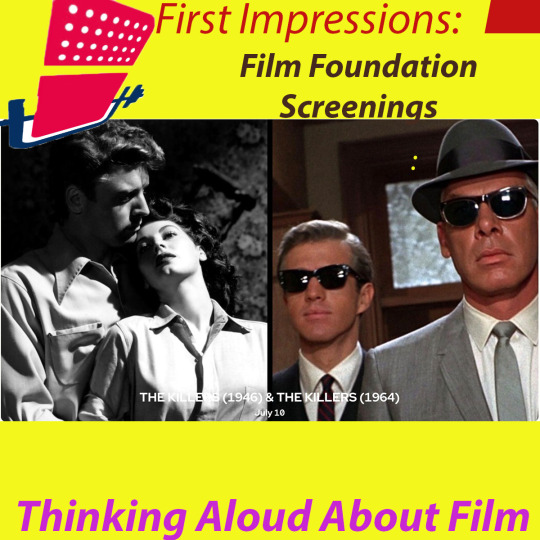
View On WordPress
#Burt Lancaster#Don Siegel#Film Foundation Screenings#Hemingway#Lee Marvin#Martin Scorsese#Restorations#Robert Siodmak#Tarkovsky
0 notes
Note
Strange question, but I'm curious. Do you have a least favourite computer?
Ohhhh, good one. I'm going to make some enemies for these, I'm sure.
Least favorite vintage computer:
Apple I
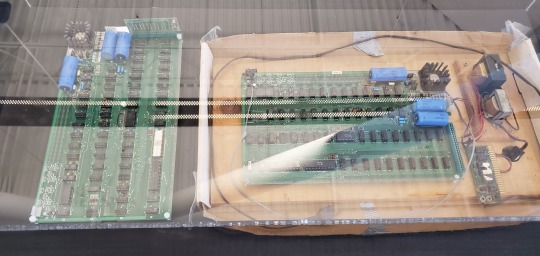
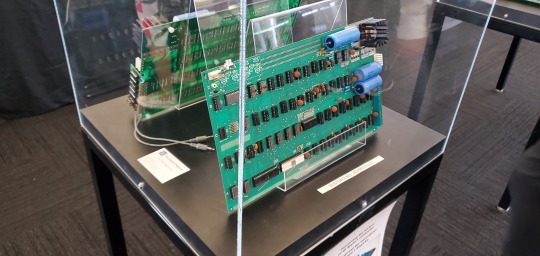

Not for any technical reasons, or anything about its history. I happen to like and respect Steve Wozniak, and everything he did in the service of computing in the 1970s. His ROM monitor known as WOZMON is only 256 bytes so it can fit into a first generation 1702A EPROM, which is damned impressive. I use the newer EWOZMON regular basis on other 6502 machines.
The Apple I exemplifies a computer that no longer exists as a computer. Rather, it's become the legendary trading card for the ultrawealthy techbro types who seek to commodify the history of the home computer revolution that they didn't bother to study. It's been reduced to no more than a static display piece, and a cornerstone of revisionist history, ignoring the larger picture.
An Apple I is considered too monetarily valuable to risk applying power to or fixing, "gotta leave it original!" with failed, leaky capacitors, doing nothing. Well if you can't use it, it ceases to be a computer because it isn't computing anything. They had almost a dozen of them at VCF West XIV, most of which were under plexiglass with a hired guard to keep an eye on them because the high price they fetch. Only one was powered up at a time under the watchful gaze of experts, handling things with museum gloves. Unlike other exhibits, these were not available to be touched or interacted with (which defeats the whole reason people enjoy vintage computer festivals).
Assuming you look beyond the hype, and get your hands on a working Apple I? It turns out to be quite underpowered and limited -- which makes sense, Woz was optimizing the shit outta his part count and budget! I wish I had his skills. It was a major technical achievement to get it to do that much with so little. It's a TV Typewriter (RIP Don Lancaster) bolted to a minimal 6502. If i had one at my disposal in the 1970s, I'd probably do like the contemporary hackers did and modify it as my budget and skills allowed. But it's 2024 and an Apple I -- you aren't allowed to do that. No, if I had an Apple I, I could sell it and buy a house with that money.
If it weren't for all that, I think I'd probably just be indifferent to it, or maybe even like it for what it is.
Least favorite general computer:
eMachines eTower 600is
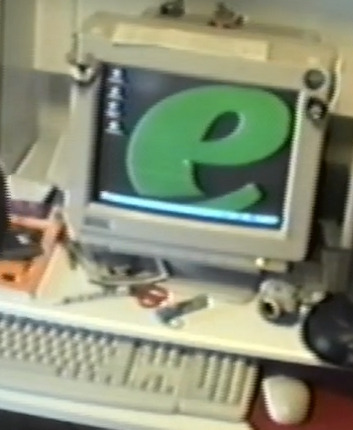
What a piece of shit. I had one when it was new, running Windows ME and it was hot garbage. I could not stand this underpowered excuse for a computer after a few months when the new computer sheen wore off. Floppy drive died too soon. Didn't come with the advertised 64MB of RAM (who puts 33MB of RAM in a computer?). Hard drive was only 10GB, kept filling it up. It was filled with bloatware, the keyboard was cheap garbage. I don't begrudge my parents for buying it, they didn't know any better and I was too young to have any say in the matter. That said, it endured the shortest tenure of any computer in my house to date.
Never obsolete my ass.
606 notes
·
View notes
Text
Marlon Brando

Physique: Heavyset Build Height: 5′ 8¾″ (1.75 m)
Marlon Brando Jr. (April 3, 1924 – July 1, 2004; aged 80) was an American actor and activist. Widely considered one of the greatest and most influential actors of all time, he received numerous accolades throughout his career, which spanned six decades, including two Academy Awards, two Golden Globe Awards, one Cannes Film Festival Award, and three British Academy Film Awards. Brando is credited with being one of the first actors to bring the Stanislavski system of acting and method acting to mainstream audiences.


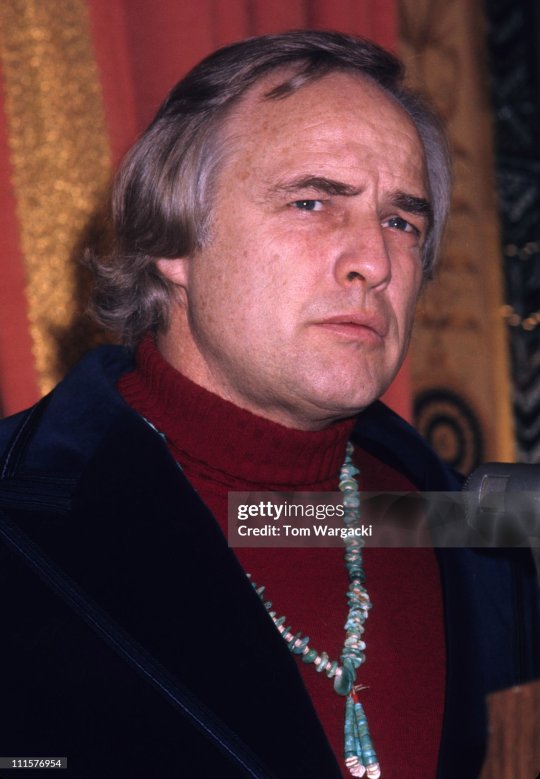


In his youth Brando was an electrifyingly handsome and talented star. By the time I took notice of him, he weighed well over 300 pounds but still a handsome and talented star with some men and women still wanting to tap that. Brando's notoriety, his troubled family life, and his obesity attracted more attention than his late acting career.


Married three times, Brando was bisexual and possessed of a voracious libido and there were plenty experiences to report. He was the father to at least 11 children, three of whom were adopted. Among his partners were Burt Lancaster, Laurence Olivier, Tyrone Power, Montgomery Clift, James Dean and Rock Hudson. Hell. He even tapped Paul Newman. With all that, I wonder if he was pitching or catching. Who am I kidding. Brando was a top all the way. Having a balanced diet, his conquests also included Marilyn Monroe, Marlene Dietrich, Grace Kelly, Shelley Winters, Ava Gardner, Hedy Lamarr, Ingrid Bergman, Edith Piaf and Doris Duke (the world’s richest woman at the time). And he had a bizarre, intimate relationship with actor Wally Cox that would last a lifetime.
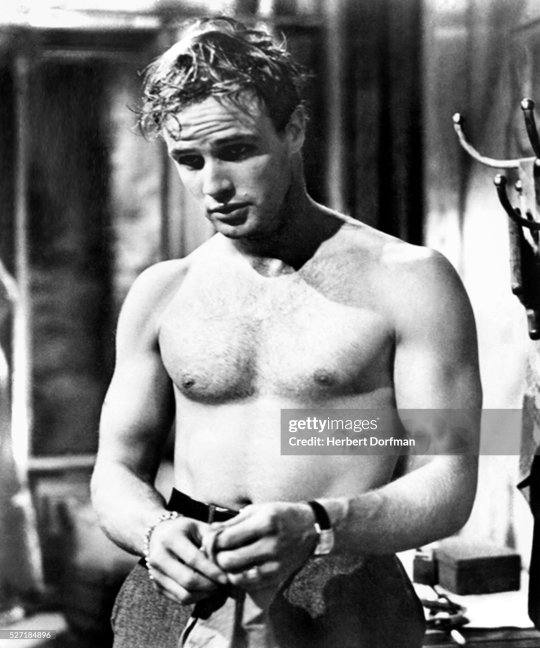


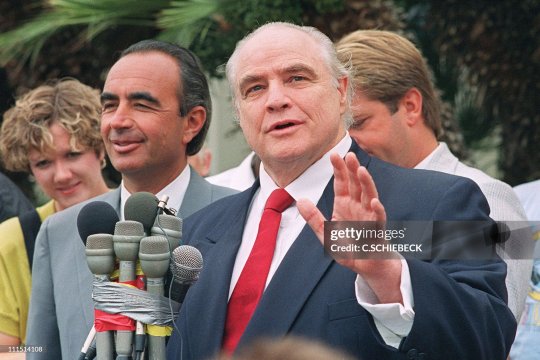
The last two decades of Brando's life were marked with controversy, and his troubled private life received significant attention. He struggled with mood disorders and legal issues. Brando continues to be respected and held in high regard. On July 1, 2004, Brando died of respiratory failure from pulmonary fibrosis with congestive heart failure at the UCLA Medical Center. Brando was cremated and his ashes were put in with those of Wally Cox. They were then scattered partly in Tahiti and partly in Death Valley.

RECOMMENDATIONS: Don Juan DeMarco (1994) Apocalypse Now (1979) Superman (1978) Last Tango in Paris (1972) The Godfather (1972) Mutiny on the Bounty (1962) One-Eyed Jacks (1961) On the Waterfront (1954) A Streetcar Named Desire (1951)
54 notes
·
View notes
Text
The Bushwhack Job: Chapter Four
Chapter One Chapter Two Chapter Three
(Disclaimer: This is a relatively rough draft and subject to change when I post to AO3. I'm just overly excited and want to share what I have.)

Three bodies had been recovered from the destroyed LanCast building.
It took several hours to discover that much. Nate had insisted they leave the hotel as Eliot instructed, falling back on one of the contingency plans the two of them probably talked about when they were alone in the bar. Parker didn’t ask. She didn’t want to think about worst-case scenarios.
Once secured in a new hotel across town, Hardison had done whatever he usually did to get their information, and came up with a police report of the accident.
Three bodies. No identification. Awaiting coroner’s report.
They took the news in silence. They climbed into Lucille in silence, they drove to the morgue in silence, and they entered the cold building in silence. Hardison and Parker donned their FBI disguises, with Nate and Sophie wearing the appropriately stricken expressions of worried loved ones. It was late, but the badges got them in, and an assistant met them at the door and led them to the lab where the autopsies were being performed.
“Special Agent Thomas,” Hardison said, flashing his badge to the medical examiner. “This is Special Agent Hagen. We’re invistigating the incident at the LanCast building.”
The medical examiner, whose nametag identified her as “Dr. M. Morton”, glanced at Nate and Sophie. “We haven’t been able to identify the victims yet. Are you hoping to find someone? I can only speak with immediate family.”
“Our son,” Sophie said in an unsteady voice. “He may have been inside the building when it—when it…”
Nate put a hand on her arm, and Hardison cleared his throat to bring the doctor’s attention back to him.
“What can you tell us about the victims?”
“Not much, I’m afraid.” She gestured at the three bodies, which her assistant had hastily covered in white cloths. “The remains were badly damaged by the fire. They were all male, all aged late-twenties to mid-thirties.”
“Anything else?” Parker asked, her stomach dropping. “Height? Clothes? Anything they may have had on them?”
“These two are around 6’2”, 6’3”. This one is shorter, maybe 5’7”.” Dr. Morton indicated the body in the middle and frowned when Sophie gave a little gasp of dismay. “I’m sorry,” she said. “Does that match the description of your son?”
Sophie nodded, pale-faced and trembling.
Dr. Morton gave her a sympathetic look and lifted an evidence bag from the tray at the body’s feet. “We found this on him,” she said, holding it out to Sophie. “Do you recognize it?”
They all leaned in, and Parker felt the heat leave her body in a rush.
Eliot’s necklace.
Sophie’s knees gave out. Nate caught her as she fell, but she sank to the ground with her face in her hands, shaking. “It’s him,” she sobbed, her voice muffled. “He’s ours. It’s Eliot.”
A strange, distant buzzing sound filled Parker’s ears, and for a moment, it was all she could hear. Hardison spoke beside her, and Sophie went on crying, but the words were lost to the static hum inside her head. The doctor asked them something, and Nate stared straight through her as if she didn’t exist. He wasn’t old enough to be Eliot’s dad, but suddenly he looked it.
They can’t handle it, said a cold, detached voice in her brain. They’re falling apart. Who’s going to hold them together?
Eliot. But Eliot was gone, and Eliot couldn’t be gone, and it didn’t matter whether he was gone or not, because he wasn’t here.
Parker was.
She blinked, and all the noise slammed back into her, and her brain caught up to what Dr. Morton was saying.
“—so sorry I have to ask, but it would help if we could get a DNA sample to verify his identity.”
“Yes,” Parker said. “A DNA sample. I’ll just—this is a shock for them. I’m going to take them out and give them a moment.”
Dr. Morton nodded. “Of course. Take all the time you need.”
Parker glanced at Hardison, who was blinking at the body under the sheet, his eyes wide and wet. She put her hand on his shoulder to turn him away. “Sir,” she said to Nate. “Ma’am. Let’s go. We can talk outside.”
Nate looked at her, but there was a strange emptiness in his eyes that made her feel tiny and hopeless. “Sir,” she repeated. “Please come with me.”
“Sophie,” he murmured, breaking eye contact with Parker to crouch at Sophie’s side. “Come on, honey. Stand up.”
“I don’t want to leave him,” Sophie said, her voice thick and broken. “Please, he can’t stay here, not with these men. Please, can’t we—?”
Parker took Sophie’s elbow and pulled her gently to her feet, guiding her toward the door. Nate and Hardison followed, but Parker didn’t look back. She had to get them out.
Eliot would get them out.
She brought them to the van, and took the driver’s seat after getting them safely inside. Hardison was crying now, too, but Nate sat in absolute, unmoving silence. She drove to the hotel, parked, waited for someone to open the door.
No one did.
“We don’t know,” Hardison said after a few minutes. His face was dry, but his voice still sounded uneven. “He could have lost the necklace. It doesn’t prove anything.”
Sophie shook her head, but had to try twice before she could get her words out. “He would have called. He would have found us if he wasn’t…”
Dead. The word slammed itself against the inside of Parker’s skull, over and over again like a security alarm she hadn’t accounted for.
Dead, dead, dead.
Adapt to the situation, the voice in her head said. First things first. Take care of your team.
She opened her door. Hardison followed her, helping Sophie from the back, but Nate stayed where we was in the passenger seat. Parker moved around the van to open his door, but he didn’t look at her.
“Go inside,” she said, her voice low and steady. “We’re not done.”
“It doesn’t matter,” he said.
“Lancaster knew about us,” she said. “He set a trap for Eliot and me. We have to finish this, or he’ll keep coming after us. After Hardison and Sophie.”
He looked up then, his eyes still hollow, his hands loose in his lap.
“This is what Eliot would do,” Parker said.
Nate lifted one hand and set it over his face. He took a breath, two, and exhaled so heavily that his shoulders shook.
“What would Eliot say if it was one of us?” he asked.
Parker shook her head. “It wouldn’t have been anyone else.”
“What does it say about me that I couldn’t stop this?” Nate asked, and Parker heard the unspoken again in the way his voice hitched at the end.
“I don’t know,” Parker whispered. “But we need you. Lancaster is going to try again, and we need you.”
Nate nodded, dropping his hand once more. He stood unsteadily and followed the others across the parking lot toward the door.
Parker watched them go, slipping her hand into her pocket to remove the evidence bag she’d taken when Dr. Morton's back was turned. She opened it, picked out the necklace, and clasped it around her neck, tucking the cold metal charm under her shirt so it laid flat against her skin.
Then she followed what was left of her team inside the hotel.
#leverage#the bushwhack job#fanfiction#leverage fanfic#my fic#don't worry. eliot's not dead. this is not an mc death
14 notes
·
View notes
Text
Abbiamo letto il libro prima di dormire, la nostra lettura serale, e ci aveva commosso, ora abbiamo finito di vedere il film, e posso dire con cognizione di causa che Il Gattopardo è il nostro Barry Lyndon. C'è una scena nel film, verso la fine, dove Don Fabrizio/Burt Lancaster si guarda nello specchio con gli occhi rossi e lucidi e gli scende una lacrima, che ancora mi commuove mentre lo sto scrivendo. Quando è morto Don Fabrizio, nel libro, ho sentito un vuoto, il vuoto che si sente quando viene a mancare una persona viva. Onore a Tomasi di Lampedusa, onore a Visconti. Mi tengo la mia commozione e buonanotte.

13 notes
·
View notes